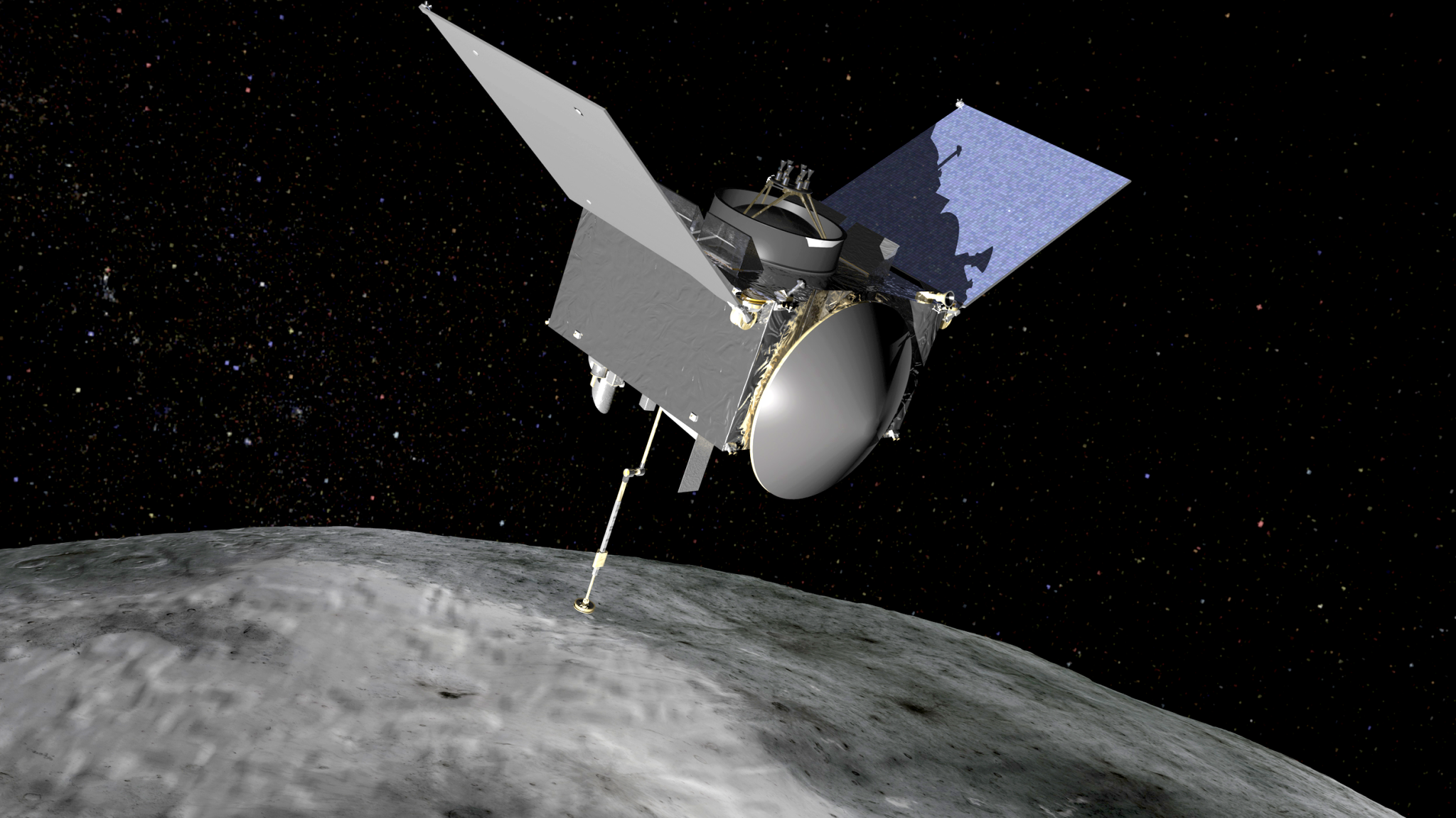
Media will have an opportunity to photograph NASA’s Origins, Spectral Interpretation, Resource Identification, Security-Regolith Explorer (OSIRIS-REx) spacecraft and interview mission officials at 8 a.m. EDT Saturday, Aug. 20, at the agency’s Kennedy Space Center in Florida. OSIRIS-REx will be the first U.S. mission to sample the surface of an asteroid and return the sample to Earth.
There will be three opportunities to photograph the spacecraft. Buses will depart the Kennedy Press Site at 8 and 11:30 a.m., and again at 2:30 p.m., for transportation to the Payload Hazardous Servicing Facility (PHSF). Due to space restrictions, only two representatives from each media organization will be allowed to participate, and no more than 15 participants may sign up for each of the three viewing opportunities.
All media must RSVP for this event no later than Monday, Aug. 15 by emailing Jennifer Horner at jennifer.p.horner@nasa.gov and specifying a preferred viewing time.
Media requiring access credentials for Kennedy should apply online at:
The deadline for U.S. citizens to apply is Aug. 15. International media must apply by 4:30 p.m. Aug. 9.
Media credentials must be picked up between 6 a.m. and 3 p.m. Friday, Aug. 19, at the Kennedy Badging Office, located on State Road 405, east of the Kennedy Visitor Complex. Two forms of government-issued identification are required, including one with a photograph, such as a driver’s license or passport.
Media Access Instructions
Please read access instructions carefully to avoid being denied entry to the clean room after arrival at the PHSF.
OSIRIS-REx has a science requirement to bring back to Earth a “pristine sample.” In order to do so, strict contamination control protocols must be followed. Since part of the investigation is to determine whether organics are present on the asteroid, the mission adopted a stringent prohibition against any material with amino acids. Therefore, nothing made of or containing nylon can be permitted in the PHSF high bay.
Long pants and closed-toe shoes must be worn. No tank tops, shorts or skirts will be permitted. Procedures for optically sensitive spacecraft must be followed by individuals entering the clean-room where the spacecraft is being prepared for launch. Full clean-room attire must be worn and will be furnished. Attendees may not wear perfume, cologne, hair spray, nail polish or makeup. Those wearing makeup will be required to remove it prior to entry.
Photographers will need to clean camera equipment under the supervision of contamination control specialists. All camera equipment must be self-contained; no portable lights will be allowed. Non-essential equipment, such as suede, leather or vinyl camera bags, carrying cases, camera straps, accessories with Velcro and selfie sticks must be left outside the clean room. No notebook paper, pencils or click-type ball point pens are permitted; clean-room paper will be provided.
Use of wireless microphones and cellular telephones will be permitted if not contained in external cases or holding devices. Electronic flash will be permitted. The lighting in the facility is high-pressure sodium (orange).
No food, chewing gum, tobacco, lighters, matches or pocketknives will be allowed and so should not be brought to the PHSF.
OSIRIS-REx is scheduled to launch at 7:05 p.m. Sept. 8 from nearby Cape Canaveral Air Force Station’s Launch Complex 41 on a United Launch Alliance Atlas V rocket. The spacecraft will travel to the near-Earth asteroid Bennu to survey the surface, then retrieve at least 60 grams (2.1 ounces) of surface material and return it to Earth for study. The spacecraft will rendezvous with the asteroid in 2018. The sample return is planned in 2023.
NASA’s Launch Services Program at Kennedy is responsible for launch management. United Launch Alliance of Centennial, Colorado, is the provider of the Atlas V launch service.
NASA’s Goddard Space Flight Center in Greenbelt, Maryland, provides overall mission management, systems engineering and safety and mission assurance for OSIRIS-REx. Lockheed Martin Space Systems in Denver built the spacecraft and is responsible for mission operations after launch. Dante Lauretta, of the University of Arizona, is the mission’s principal investigator.
OSIRIS-REx is the third mission in NASA’s New Frontiers Program. NASA’s Marshall Space Flight Center in Huntsville, Alabama, manages New Frontiers for the agency’s Science Mission Directorate in Washington.
For more information about the OSIRIS-REx mission, visit:
https://www.nasa.gov/osiris-rex
-end-
Dwayne Brown
Headquarters, Washington
202-358-1726
dwayne.c.brown@nasa.gov
George H. Diller
Kennedy Space Center, Fla.
321-867-2468
george.h.diller@nasa.gov
Nancy Neal Jones
Goddard Space Flight Center, Greenbelt, Md.
301-286-0039
nancy.n.jones@nasa.gov

























